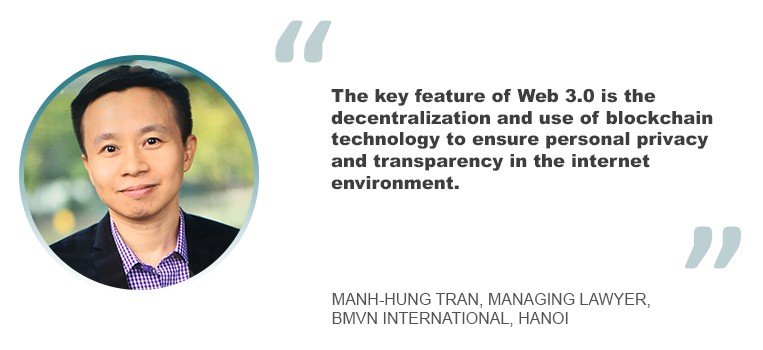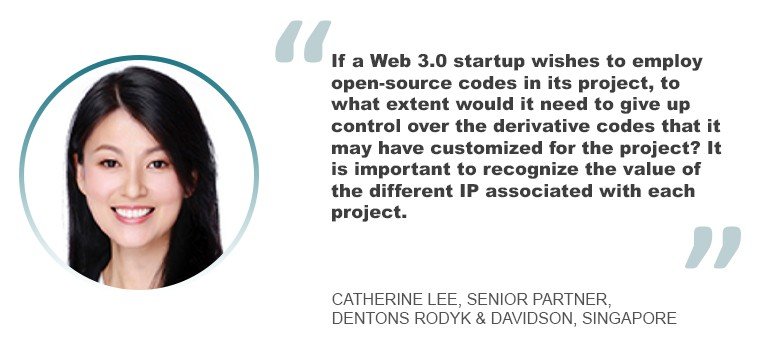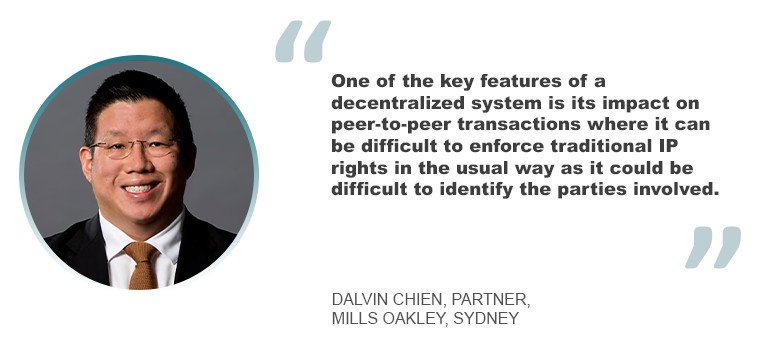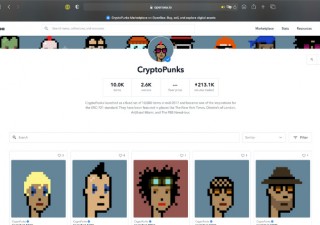How Web 3.0 revolutionizes intellectual property: NFTS, DAOS and decentralized ownership
31 January 2024

While Web 2.0 brought interactivity to the internet, it also raised privacy concerns due to the exploitation of user data – thus, Web 3.0 was conceived. Excel V. Dyquiangco explains Web 3.0 and its scope, including its effect on traditional notions of IP ownership and control.
Since its inception, the World Wide Web has seen significant evolution, transitioning from Web 1.0 to Web 2.0 and now Web 3.0. The first version of the web, Web 1.0, is the era where the role of a user is limited to reading information provided by the content producers. Web 2.0, the current state of the internet, transformed the internet into a read-and-write model from the initial read-only, allowing users to interact with web pages.
While the transition from Web 1.0 to Web 2.0 made the internet dynamic and fun, it did so at an enormous cost. Web 2.0 companies offer ostensibly free services, but there is a hidden cost to privacy as they exploit user data.
The dilemma necessitates a remedy, which is why the third version of the internet was conceived. Web 3.0 has the potential to change the nature of the internet from corporate-owned networks to something controlled by users while maintaining the Web 2.0 functionalities people love today. It can also be described as the read-write-own era.
With Web 3.0, users can govern these blockchain-based networks through voting mechanisms, sometimes involving a decentralized autonomous organization (DAO) by leveraging cryptocurrency tokens.

“As the network grows, value can accrue to the community through the rising price of tokens,” said Manh-Hung Tran, a managing lawyer at BMVN International, the Baker McKenzie local affiliate in Hanoi. “The key feature of Web 3.0 is the decentralization and use of blockchain technology to ensure personal privacy and transparency in the internet environment.”
Web 3.0’s decentralized and blockchain-based nature provides numerous benefits in strategizing IP structure. “These benefits include providing immutable records of IP ownership and the use of IP assets, facilitating IP enforcement by tracking the records, reducing IP infringement, and automating IP licensing and royalty payments via smart contracts,” he said. “Keep in mind that IP is the most significant asset of a tech company, especially for a Web 3.0-related one. So, positioning their competitive edges in the decentralized market may depend on how well Web 3.0 startups structure their IP.”
Tran added: “Despite this, a Web 3.0 project poses certain new challenges to a company’s IP strategy, especially considering open source and the public domain. To strike a balance between the decentralization of the Web 3.0 project and the protection of IP assets, its founders and IP strategists must take a tailored approach for each of Web 3.0’s two key components – the on-chain part (the decentralized blockchain network on which transactions via smart contracts exist) and the off-chain part (the interfaces of the website for user interaction).”
Catherine Lee, a senior partner at Dentons Rodyk & Davidson in Singapore, added that while most Web 3.0 startups wish to provide autonomy to the users over the digital assets concerned, a startup should still consider the extent to which it wishes to protect its core IP assets associated with the project.

“For example, if a Web 3.0 startup wishes to employ open-source codes in its project, to what extent would it need to give up control over the derivative codes that it may have customized for the project?” she said. “The nature of the Web 3.0 project is also a consideration. It is important for each startup to recognize the value of the different IP associated with each project, and accordingly how best to protect and structure the related components of the project. Although there are challenges, there are significant opportunities in the Web 3.0 space as well. For example, a Web 3.0 startup can use smart contracts to deploy mechanisms and rules to assigning IP rights and remuneration.”
Using IP for Web 3.0
According to Tran, all types of IP – trademarks, patents, copyrights, domain names and trade secrets – are relevant to the Web 3.0 project in the context of technical advancement. Since a Web 3.0 project could have a wide variety of IP-protectable components, the type of IP protection should depend on the objects being safeguarded.
“As a first step, the Web 3.0 founders may think about patenting certain innovative and inventive use of Web 3.0 technology, especially technological devices that would be used to support the decentralized network,” he said. “A patent grants its holders legal protection against others making unauthorized commercial use of the patented inventions. It may be useful in attracting funding and encouraging R&D to develop the Web 3.0 startup’s platform. Trademark protection is another type of IP that needs to be acknowledged. Web 3.0 startups can protect their brands, logos and other unique indicators by registering them as trademarks to block others from filing for or utilizing marks that are confusingly like theirs.”
Source code, computer programs, user-generated content, and any other copyrightable work residing on a Web 3.0 platform are thus automatically accorded copyright protection.
“However, due to the decentralized nature of Web 3.0, the open-source licence for the on-chain part should be considered. On a related note, taking into account the importance of pitch decks and design materials to a startup’s fundraising efforts, it is also important for the company to take reasonable precautions to prevent others from freely using these resources. While it may be too much work for startups to register their materials for copyright separately, they can still protect their work by using watermarks or other branded components that serve as a seal of authenticity and can be traced back to them,” he said.
Another area for consideration is the registration of domain names, especially blockchain domains. Blockchain domains are domain names that operate and are stored in a decentralized network or a blockchain.
“Being proactive and registering for such domains is advisable from a defensive perspective to prevent ether-squatting. It is recommended to take a comprehensive approach to registering blockchain domains for all key trademarks and their variants. Blockchain domains can never be deleted from the blockchain, but ownership can be transferred, or they can be burned, taking the domain out of circulation.”
In striking a balance between open-source principles and protecting its proprietary innovations through intellectual property, Lee said that these startups must consider to what extent it wishes to make its assets available to the community at large.
“This ultimately depends on the business proposition of the Web 3.0 startup concerned,” she said. “For example, for startups eager to grow a community associated with the projects, the balance may be struck in favor of making more assets easily available to the community. Regardless, it is important for the Web 3.0 startup to make clear what are the IP assets it wishes to make available, and the licensing terms associated with those assets.”
Disrupting notions of IP ownership and control

According to Dalvin Chien, a partner at Mills Oakley in Sydney, the decentralized nature of Web 3.0 has disrupted the traditional notions of IP ownership and control.
“One of the key features of a decentralized system is its impact on peer-to-peer transactions where it can be difficult to enforce traditional IP rights in the usual way as it could be difficult to identify the parties involved,” he said. “It does, however, present unique opportunities as it could be used to create ownership records and track the use of IP rights. There are efficiencies that can also be gained. For example, the use of smart contracts on the blockchain to automate the payment of royalties and licence fees. The other benefit of the block chain is that it could be more difficult to manipulate or alter, although as we’ve seen in recent cases, not impossible.”
He provides advice on how a Web 3.0 startup can strike a balance between open-source principles and protecting its proprietary innovations through intellectual property.
“Open-source code plays an important role in promoting transparency, collaboration and innovation in Web 3.0 solutions,” he said. “Startups should consider the type of open-source license if they use open-source code in their products as some licenses are more restrictive than others in what you can do with the code. In addition, startups should always seek expert legal advice and guidance as IP law can be complex of engaging third-party developers to develop and deliver a product, ensure that the appropriate confidentiality agreements and IP assignment agreements are in place. Further, startups should ensure that your startup’s IP rights are protected by registering patents and trademarks, identifying and taking steps to protect copyright material and ensuring data and systems are protected against cyber security incidents and data breaches.”






